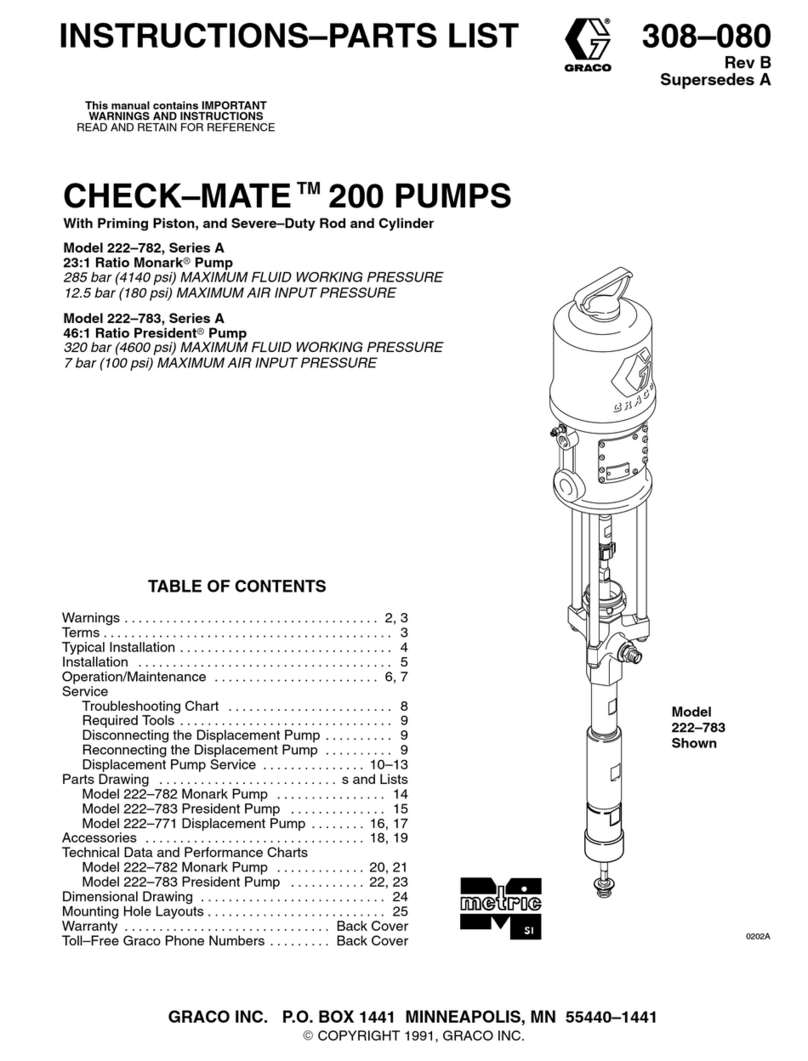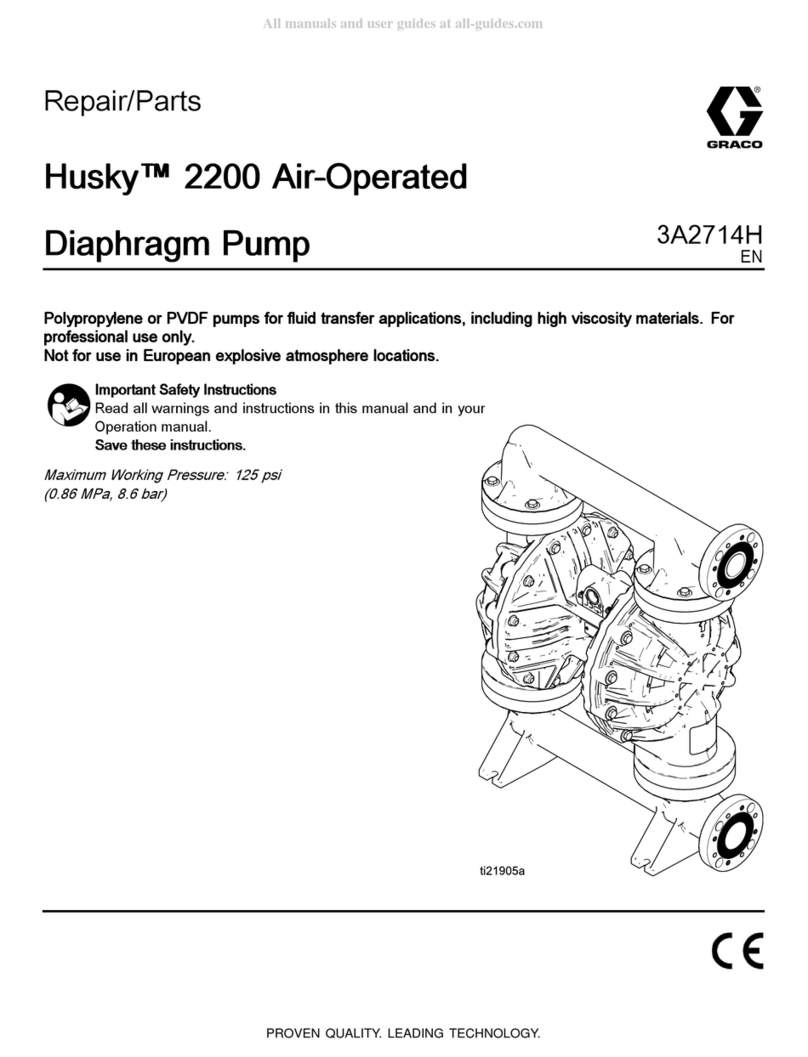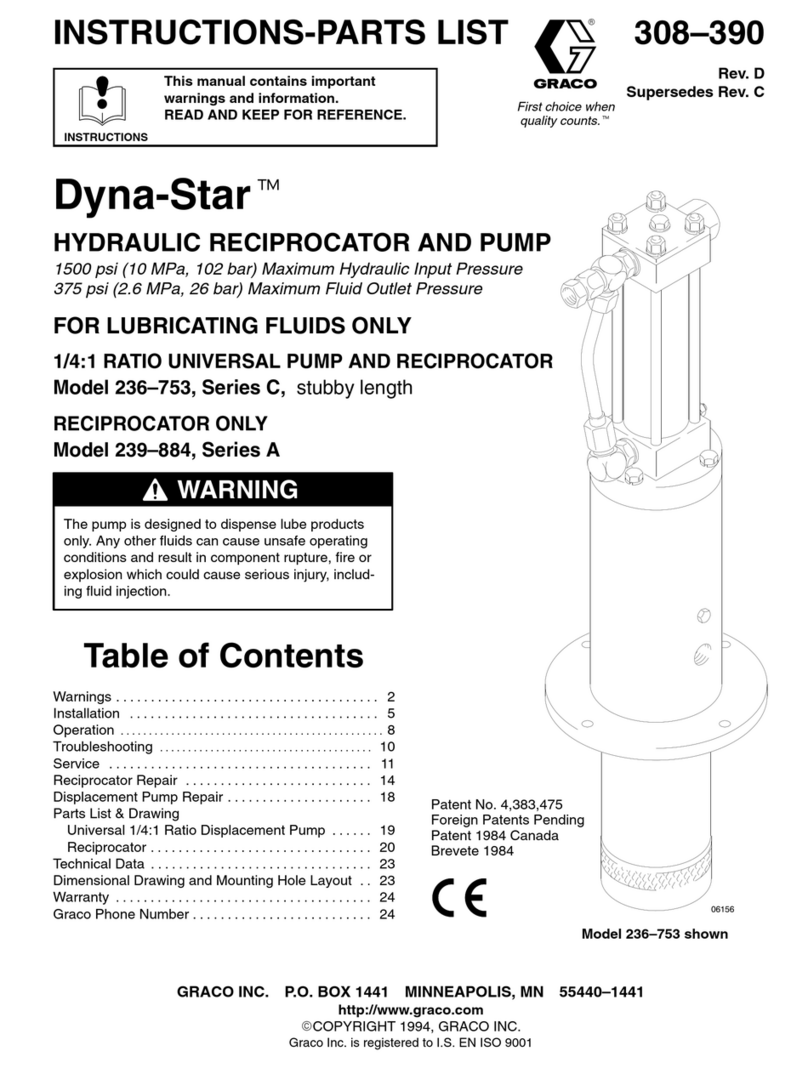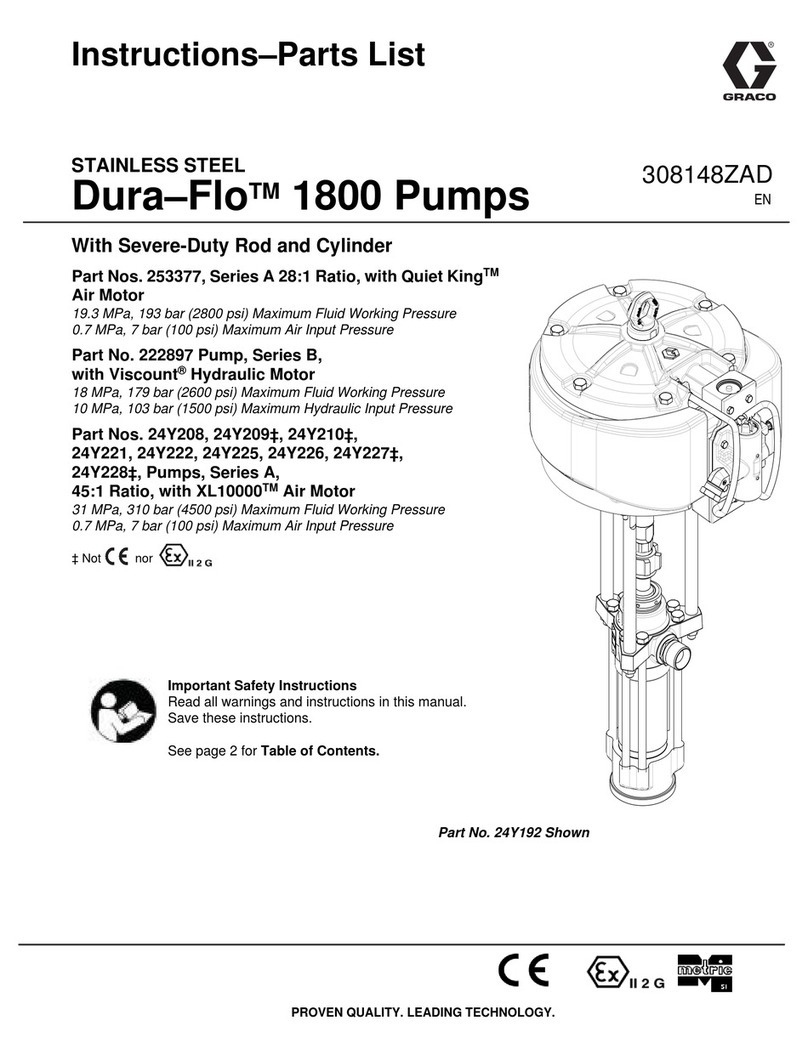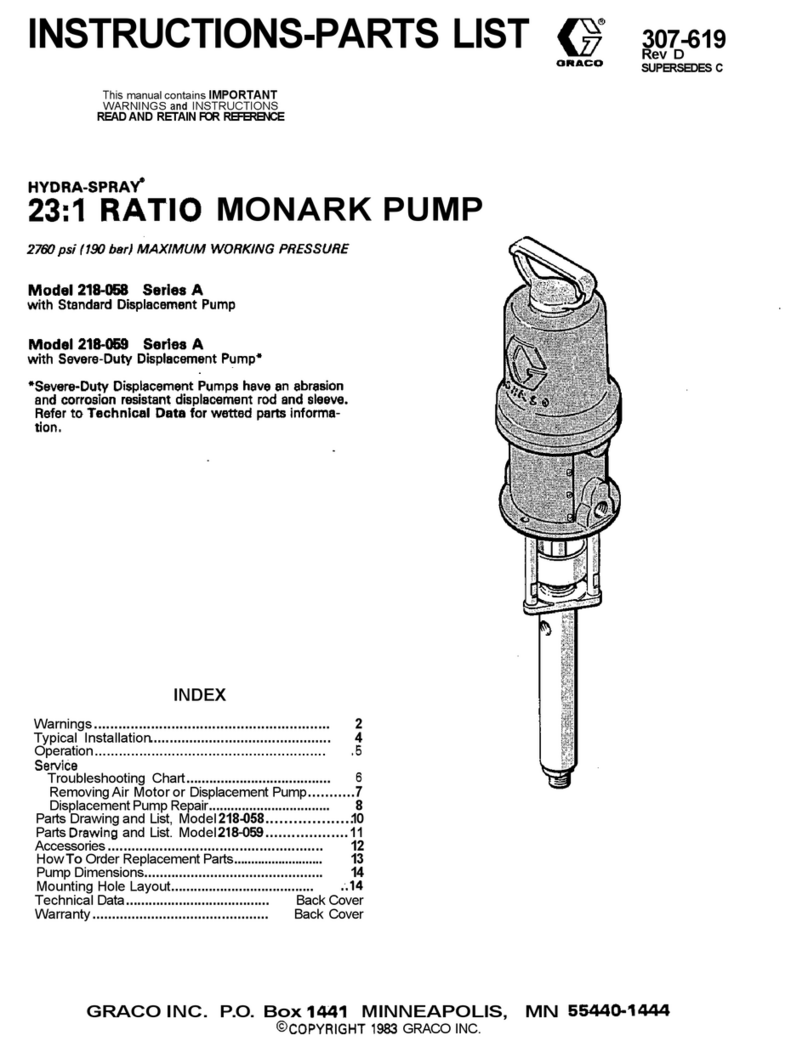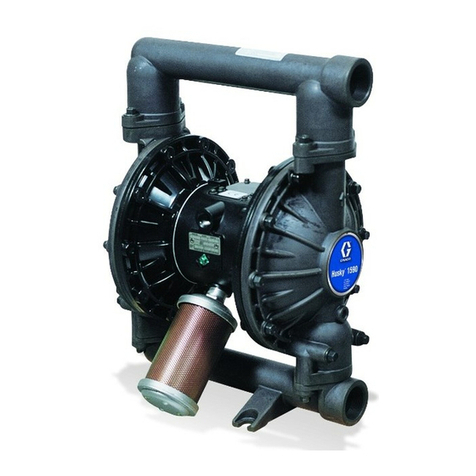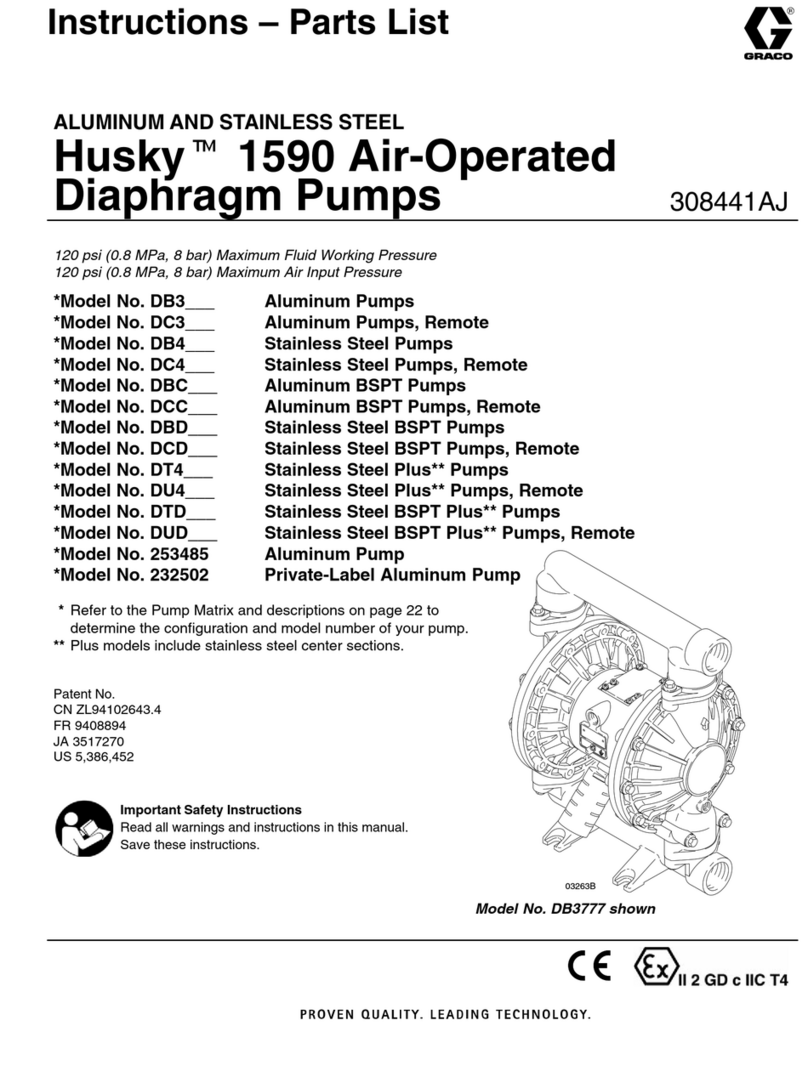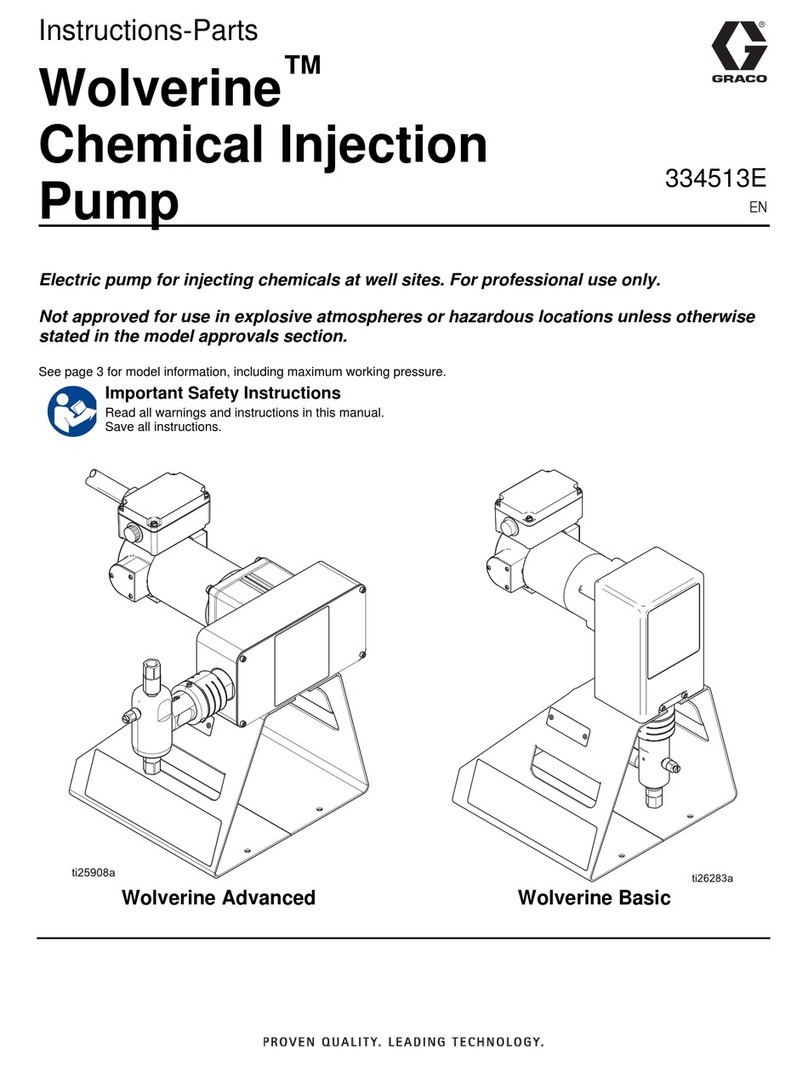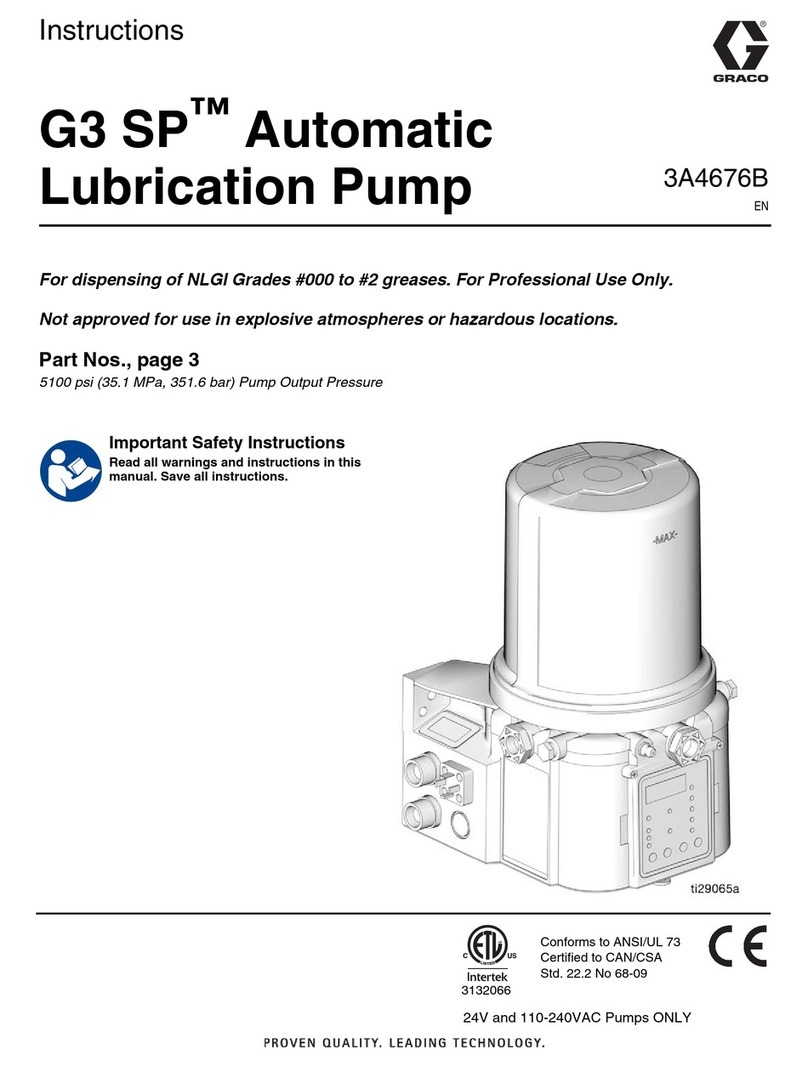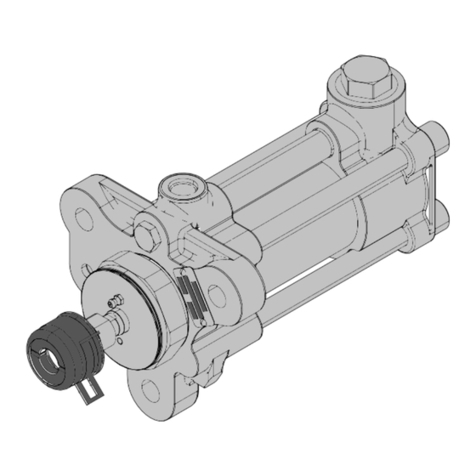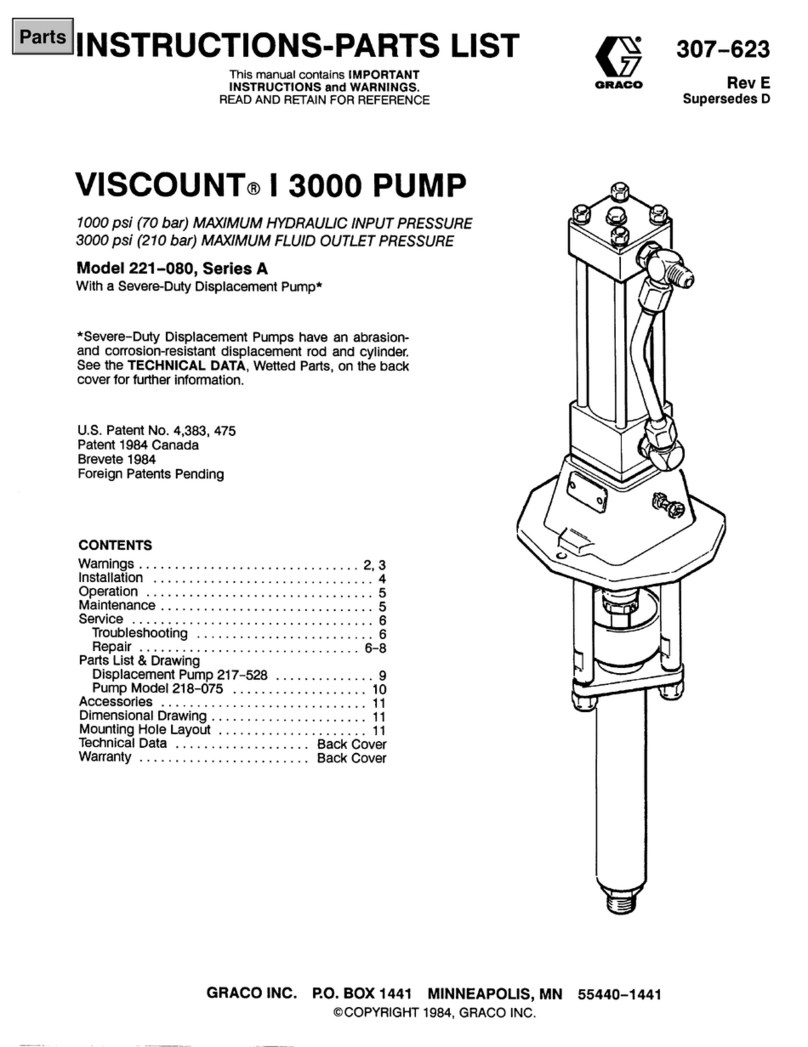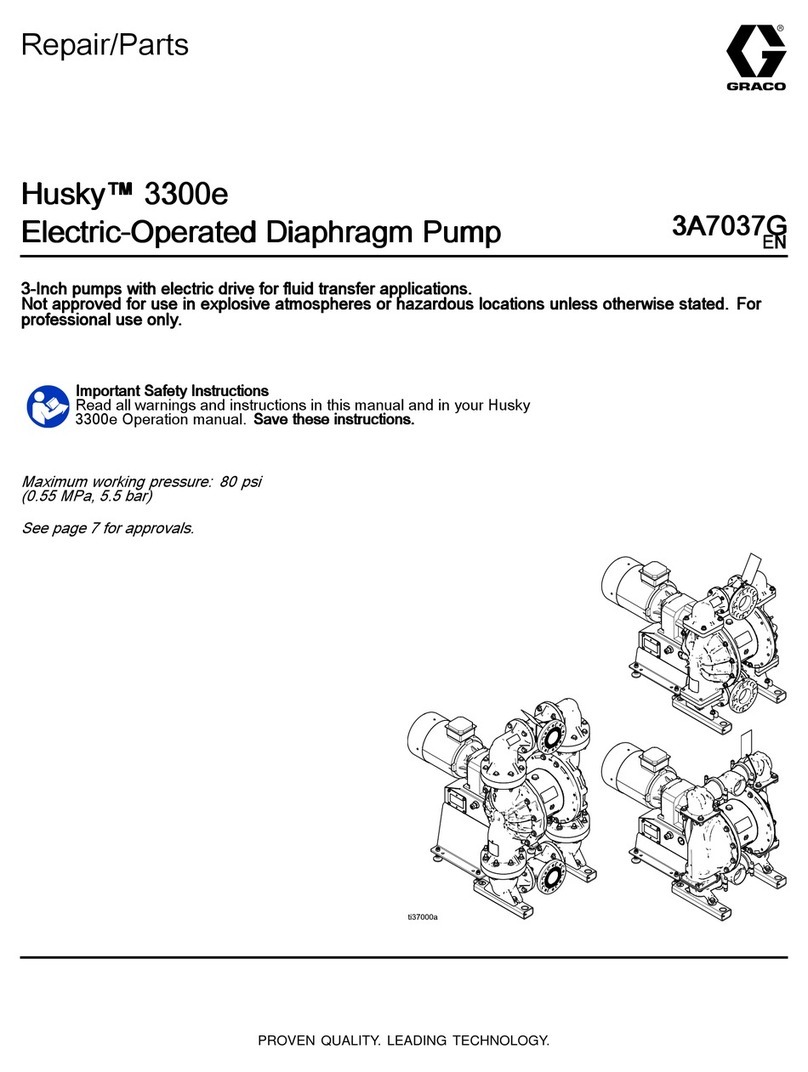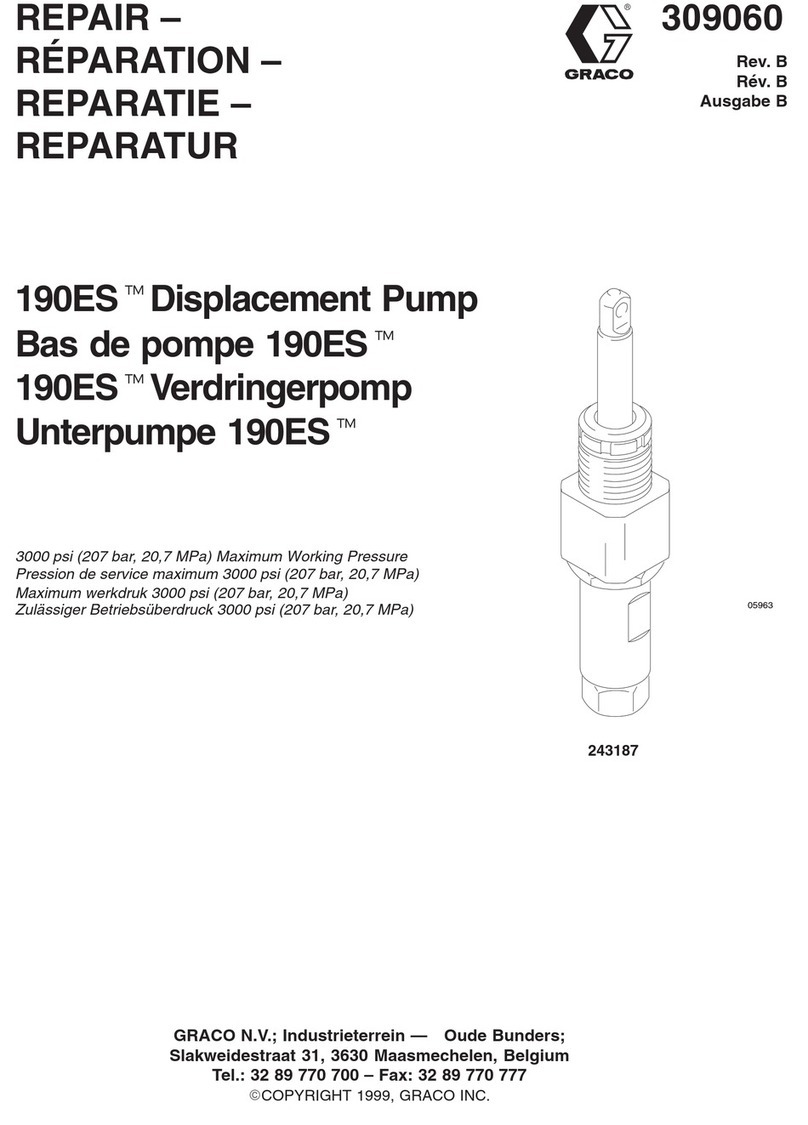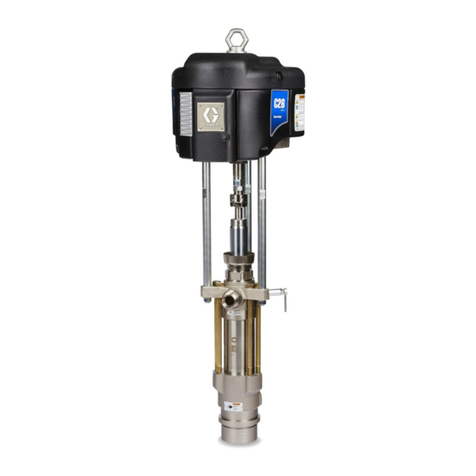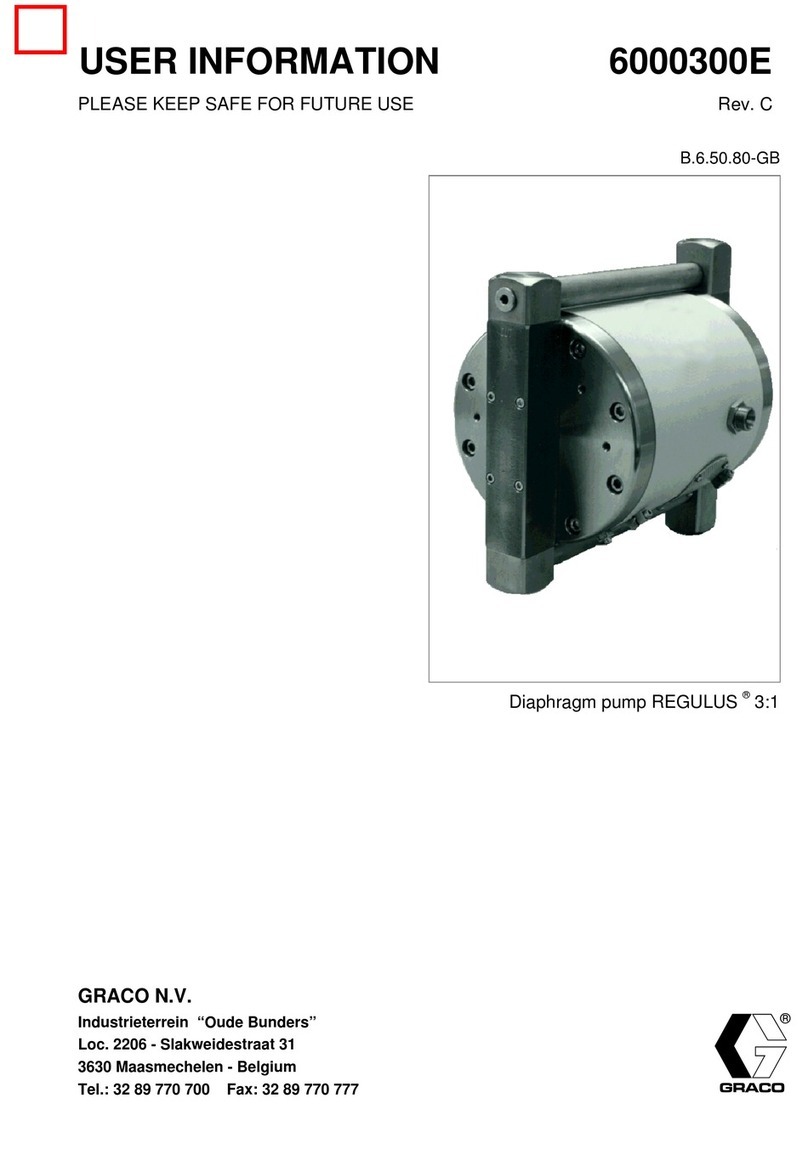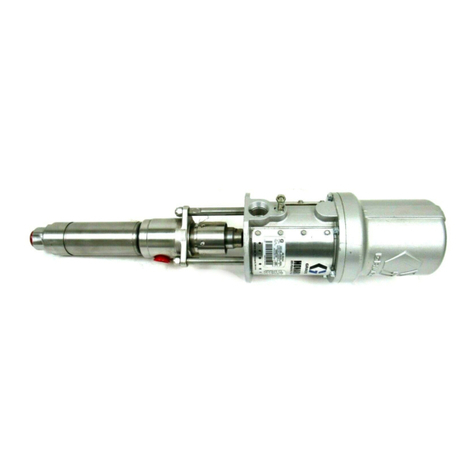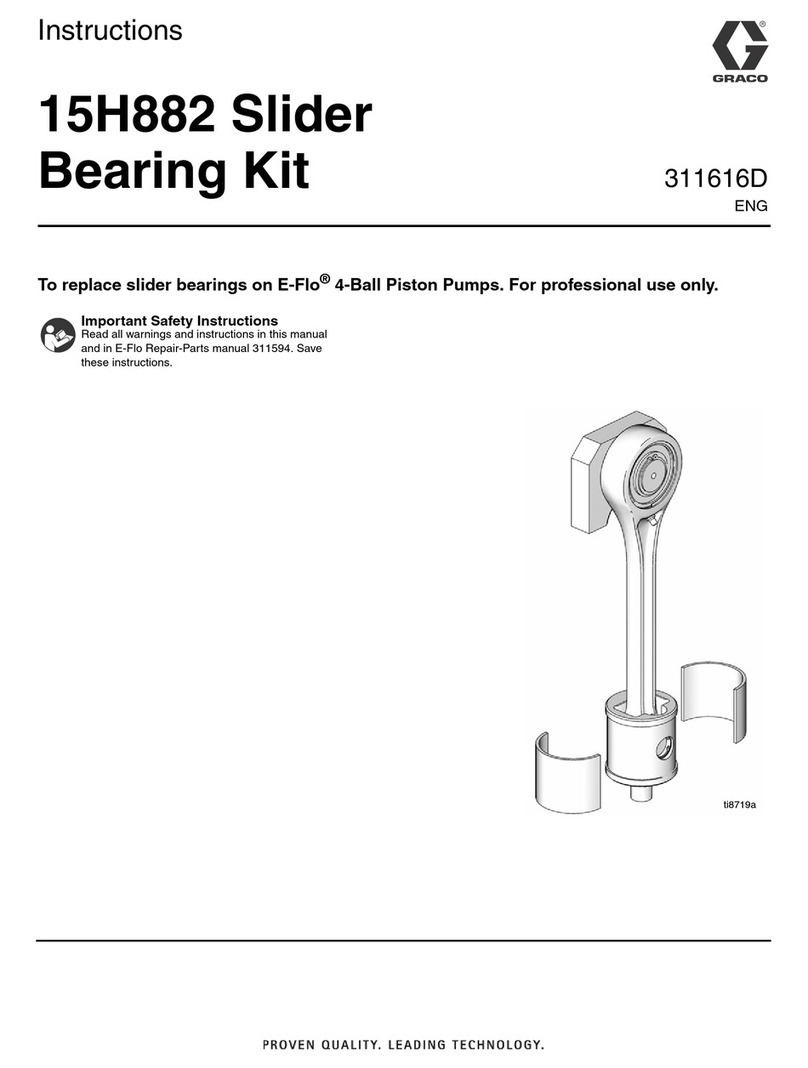
6 308368
Installation
General Information
The Typical Installation shown in is only a guide for
selecting and installing system components. Contact
your Graco distributor or Graco Technical Assistance
(see back page) for assistance in planning a system
to suit your needs.
Always use Genuine Graco Parts and Accessories.
Reference numbers and letters in parentheses refer to
the callouts in the figures and the parts lists on pages
27 to 28.
The pump is very heavy. If it must be moved, have
two people lift the pump by grasping the outlet
manifold (103) securely. See FIG. 3 on page 10.
Tightening Screws Before First Use
Before using the pump for the first time, check and
retorque all external fasteners. See Torque
Instructions, page 32. After the first day of operation,
retorque the fasteners. Although pump use varies, a
general guideline is to retorque fasteners every two
months.
Tips to Reduce Cavitation
Cavitation in a diaphragm pump is the formation and col-
lapse of bubbles in the pumped liquid. Frequent or exces-
sive cavitation can cause serious damage, including
pitting and early wear of fluid chambers, balls, and seats.
It may result in reduced efficiency of the pump. Cavitation
damage and reduced efficiency both result in increased
operating costs.
Cavitation depends on the vapor pressure of the pumped
liquid, the system suction pressure, and the velocity pres-
sure. It can be reduced by changing any of these factors.
1. Reduce vapor pressure: Decrease the temperature
of the pumped liquid.
2. Increase suction pressure:
a. Lower the installed position of the pump relative
to the liquid level in the supply.
b. Reduce the friction length of the suction piping.
Remember that fittings add friction length to the
piping. Reduce the number of fittings to reduce
the friction length.
c. Increase the size of the suction piping.
NOTE: Be sure the inlet fluid pressure does not
exceed 25% of the outlet working pressure.
3. Reduce liquid velocity: Slow the cyclic rate of the
pump.
Pumped liquid viscosity is also very important but nor-
mally is controlled by factors that are process dependent
and cannot be changed to reduce cavitation. Viscous liq-
uids are more difficult to pump and more prone to cavita-
tion.
Graco recommends taking all the above factors into
account in system design. To maintain pump efficiency,
supply only enough air pressure to the pump to achieve
the required flow.
Graco distributors can supply site specific suggestions to
improve pump performance and reduce operating costs.
Grounding
To reduce the risk of static sparking, ground the pump
and all other equipment used or located in the pumping
area. Check your local electrical code for detailed
grounding instructions for your area and type of
equipment. Ground all of this equipment:
Pump: Connect a ground wire and clamp as shown in
FIG. 1. Loosen the grounding screw (W). Insert one
end of a 12 ga (1.5 mm2) minimum ground wire (Y)
behind the grounding screw and tighten the screw
securely. Connect the clamp end of the ground wire to
WARNING
HAZARDOUS FLUIDS
To reduce the risk of serious injury,
splashing in the eyes or on the skin, and
toxic fluid spills, never move or lift a pump
under pressure. If dropped, the fluid
section may rupture. Always follow the
Pressure Relief Procedure Warning on
page 12 before moving or lifting the pump.
WARNING
FIRE AND EXPLOSION HAZARD
This pump must be grounded. Before
operating the pump, ground the system as
explained below. Also, read the section
FIRE AND EXPLOSION HAZARD, on
page 4.
